
“It’s nice to get some attention from the gay press about this series!” Andy Mangels, the leather-clad, teddy bear of a man says as he sits down for our interview with Queerty.
It’s a fair point. Despite being one of the most prolific comic book writers in American, gay or straight, he’s not exactly a household name. But that may soon change. An acclaimed writer with an impressive 30 year resume, Mangels has authored both fiction and nonfiction tomes, including the bestsellers Star Wars: The Essential Guide to Characters, and Star Trek: Section 31 Rogue. He also knows his way around comic books, having written popular titles like Adventures of Spider-Man and Justice League Quarterly. The multi-talented Mangels also enjoys successful film ventures, having produced the widely acclaimed He-Man and the Masters of the Universe DVD release for BCI Eclipse, and directed all 16 of the special features documentaries. As a journalist, Mangels has penned articles for magazines like Wizard and Starlog.
Even more impressive, Mangels has always worked as an openly gay man, becoming the first openly gay creator in the mainstream comics industry. He’s also long advocated a more diverse roster of comic book characters, including the addition of more LGBT heroes. As an artist, he prides himself on working with a team of varied origins. “We have consciously tried to make it as diverse as possible. The artist, Judit Tondora, is a Hungarian woman. Our letterers (Tom Orzechowski and Lois Buhalis) are a very liberal married couple. Our colorists on issue one are Filipino artist Michael Bartolo and Stuart Chaifetz, an anti-bullying advocate. Our lead cover artist, Cat Staggs, is a lesbian. We have other covers by gay artists such as J. Bone and Glen Hanson coming up,” Mangels boasts. “And both Lynda Carter and Lindsay Wagner are GLBT-friendly advocates,” he notes with a cheeky grin.
This December Mangels takes on a life-long dream project: a teaming of Wonder Woman and the Bionic Woman for a special comic book storyline in Wonder Woman ’77. Given the long history of both characters as gay icons, I had a chance to chat with Andy—my longtime friend—for a few questions about the upcoming arc. Wonder Woman ’77 Meets The Bionic Woman #1 debuts in comic book stores on December 7th. (The series will be six issues long.)
How about we take this to the next level?
Our newsletter is like a refreshing cocktail (or mocktail) of LGBTQ+ entertainment and pop culture, served up with a side of eye-candy.

David Reddish–So why Wonder Woman, and why the Bionic Woman? How long had you had this story sort of gestating in your mind?
Andy Mangels–The story has been gestating in my head since childhood! Think back to when you were children, and you would mix your toys up. Barbie would have adventures with the Teenage Mutant Ninja Turtles, and Batman might ride a My Little Pony into battle against Skeletor. As kids, we didn’t know what the difference between networks was, or licensing. We just knew we wanted our favorites to meet!
Wonder Woman ’77 Meets The Bionic Woman is a reflection of that childhood dream, of seeing television’s two most powerful women ever, meet, become friends, and battle the forces of evil side by side!
Do you remember seeing Wonder Woman or the Bionic Woman on TV for the first time? Did that have a profound effect on you?
AM – Wonder Woman’s debut is a huge memory for me. We had a black and white TV in a little town in Montana, and I had to do extra chores for weeks to get my parents to borrow an enormous color TV from some neighbors so I could watch the debut in November 1975! The Bionic Woman had already appeared as a character on The Six Million Dollar Man, and she got her own show a few months after Wonder Woman debuted. Combined with The Secrets of Isis on Saturday mornings, I had three fantastic super-heroines to watch on television during my formative years!
Of them all, Wonder Woman affected me the most. She was everything good about womanhood in one person, and she was more powerful than any man. And on top of that, she could spin around to change clothes! The grace, power, and empathy that Lynda Carter brought to the role of Wonder Woman and Lindsay Wagner brought to the role of Jaime Somers, the Bionic Woman, were astounding to see at that point in entertainment and cultural history. And their constant acceptance of people who were “different,” told me that they would have unreservedly accepted me as a young gay boy.
DR – Was it hard to get DC to agree to it? Did they put any restrictions on you as far as what you could do?
AM – I am generally regarded as one of the world’s foremost experts on Wonder Woman, and have been in multiple documentaries for Warner Bros., who own DC. I’ve also consulted with their licensees on various projects, including on La-La Land’s upcoming retro soundtrack for the TV series. I’ve been told that many people at Warner and DC respect my knowledge of the character and her history. And I know the history of the Bionic Woman very well also. Once Warner and Universal saw my plots for the six issues, and the care I took to acknowledge the past while bringing some cool new elements into the story, they’ve been hugely supportive. They know I respect their babies, and will do my best to bring them to the public in the best light possible.
The only big restriction we’ve had so far was in using the seal of the President of the United States. Although both shows used it, there is apparently a law against using it in “for profit” projects! Who knew?
DR – How does your approach to the characters change as opposed to writing more established comic characters?
AM – A large part of my 30-year career has been writing licensed projects, whether they were about Freddy Krueger or Iron Man or Star Wars or Star Trek or The X-Files. I do my best to significantly research the properties as much as I can before I write them, because the fans deserve that. For this series, there are call-backs to characters and situations to not only all three seasons of both Wonder Woman and The Bionic Woman, but also some links to Wonder Woman comic history as well. So for me, these are “established” characters; they just have a shorter continuity that has been established.
DR – Wonder Woman still benefits from the cult of Lynda Carter. Did you make any subtle changes to the character to more fit with Carter’s interpretation?
AM – One of the great joys of my life is that I’ve not only interviewed Lynda Carter several times, I’ve gotten to meet her multiple times as well. And I got to meet Lindsay Wagner as well, a few years ago. Both women are everything you saw in their characters: warm, witty, powerful, empathetic, and committed to an equal and loving world for all people. As I’m writing their characters — with the soundtracks to their shows playing in the background, and dolls of them watching nearby on my desk — I actively “listen” to their dialogue in my head to see if I can hear their voices saying those words. If I can’t “hear” Lynda or Lindsay saying my words, they get changed until I can!
DR – Do you have plans for sequels, or for integrating the Bionic Woman into the mainstream DCU?
AM – The Bionic Woman is owned by Universal, and licensed for comics by Dynamite Entertainment. Wonder Woman is owned by DC Comics and Warner Bros., and they have graciously loaned out the world’s most famous super-hero for this series. In the series, I make it clear that they have always existed on the same Earth, but just never met before. The fact that they both work for government agencies made their entanglement inevitable. There will be scenes and dialogue that acknowledge not only other DC heroes of the TV-film universe, but also characters such as Steve Austin, the Six Million Dollar Man, and Max, the Bionic Dog… who will be romping through some of my storyline!
As for sequels, I’ve certainly got ideas, and have seeds planted for future storylines, should DC or Dynamite want another grand team-up… or individual stories in their respective comics!
DR – What is it about Wonder Woman and the Bionic Woman that speaks to the LGBT community? Why are they gay icons?
AM – Both Wonder Woman and The Bionic Woman were revolutionary on television as some of the first shows to star women that weren’t comedies. They were also were action-adventure series, another rarity for female characters, with only a few precedents, such as Batgirl or Emma Peel. Because Lynda and Lindsay brought a huge amount of humanity to their characters, they were not just beautiful. They were strong, friendly, and relatable.
I’ve often joked that while straight male viewers and some lesbians saw them as the ultimate girlfriends, straight women could see them as best friends, and young gay men could see them as protectors/mother/sister figures. They never judged somebody as “wrong” because they were different; they only judged people as wrong who did evil things to others or the environment. Add to that the Wonder spin to change clothes, and the sound effects when they both used their powers, and I suspect there were a lot of viewers who made themselves dizzy or who ran in slow-motion.
DR – In an era of president-elect Trump, what lessons can we learn from the 1970s interpretations of superhero women?
AM – I think in the universe of this cross-over, Wonder Woman and the Bionic Woman wouldn’t have let the election go the way it did, through peaceful methods. Wonder Woman does have the golden lasso that can compel people to tell the truth, after all.
But the message of both characters on TV was often about using force only when necessary to stop evil, and to tell the truth, and to love your fellow men and women despite differences in skin color or religion or other factors. More importantly, the shows spotlit the strength of women, and how that power could and should be able to triumph over all adversity.

DR – There’s been a lot of discussion about fascism lately, and if superheroes promote the concept. What do you think?
AM – Superheroes do represent a form of vigilantism, as has been explored in most of the comic book film and television properties of the last two decades. In those movies and shows, the world of the now intrudes, and cynicism toward the actions of super-heroes allows for these charges of fascism.
Both Wonder Woman and The Bionic Woman existed in worlds where the populace embraced heroes, and looked at them as peacekeepers. It was a time when the idea that a few people could make a difference was still a good thing; nobody questioned their motives. They were just good, and they fought for the good of all humankind.
DR – What’s your next project?
AM – I do have some upcoming comic stories I can’t announce, but after 30 years in the field, I’ll just keep working at finding some cool stories to tell. I do sing regularly in Oregon with a group called Broadway Bears and I write for various pop culture magazines.
But for right now, I still have several other issues left to write of Wonder Woman ’77 Meets The Bionic Woman! And that roller coaster is proving to be a wild ride! We’re all doing our best to create the story you dreamed about as a child, bringing two of your favorite television characters into a dazzling mutual adventure. I can promise Wonder spins, bionic jumps, multiple familiar villains, costume changes, the Bionic Dog, and a return to Paradise Island!
DR – That’s good enough for me!
Artwork courtesy DC Comics



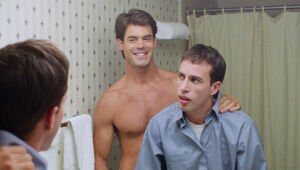

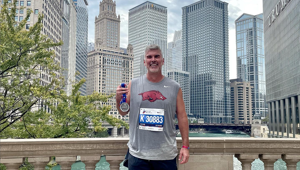

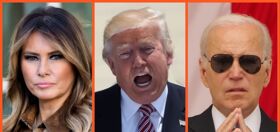


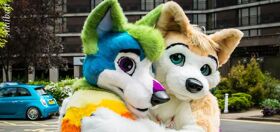



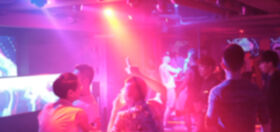
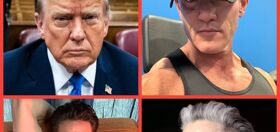

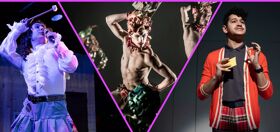

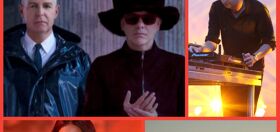


Caliban
I have a theory about proto-gay and early gay youth affection/adoration for female super/action heroes. I can only speak from my own experience I suspect it plays a part for many others as well, though they may not realize it.
I was an outsider, often bullied in school, because I was “soft” or an easy, appealing target. I don’t think they actually knew I was gay, at least not until later, but the f-word got thrown around a lot. I did things like ride motorbikes (it’s a wonder I didn’t break my neck), didn’t have an effeminate voice (not that there’s anything wrong with those who do) but I was also artistic and didn’t quite fit in. I liked action adventure TV shows and movies as much as the next guy, but Wonder Woman and The Bionic Woman appealed to me more than their male counterparts. Why? I didn’t want to BE a woman, or dress as one, so what was the deal?
I believe it’s because male Action/Super heroes, with all their macho trappings, reminded me too much of the boys who abused me, even if only on a subconscious level. Steve Austin looked like a grown-up version of the kid who pushed me into a locker one day, Christopher Reeve’s Superman looked like the kid who spit in my food several times and once burned me on the face with a heated tack, leaving a scar.
But with Diana, Jaime, Isis, or whoever, I could sit back and just enjoy it without that tension, and the stories tended to have more emotional depth, which also appealed to me.
Thoughts?